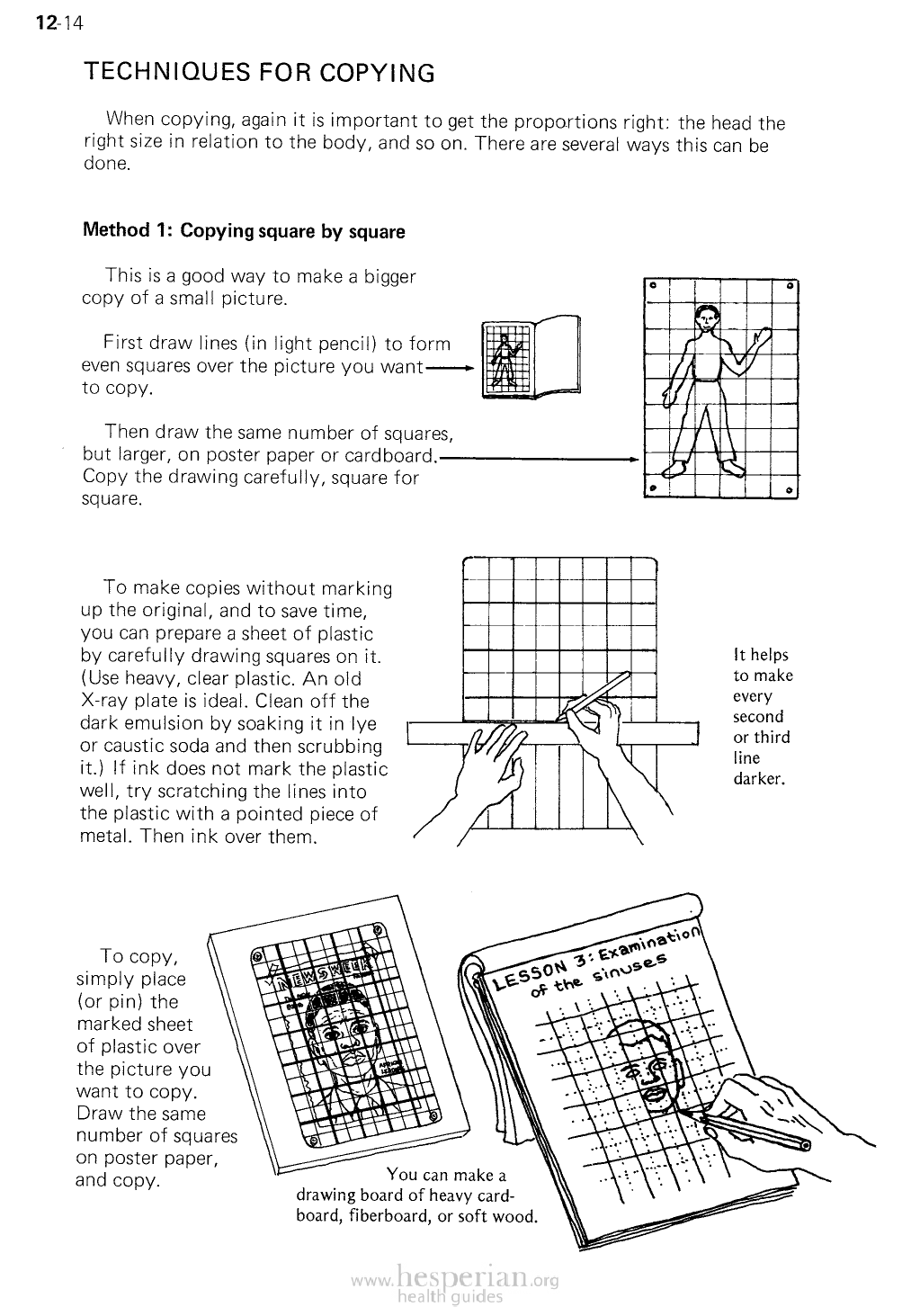
12-14
TECHNIQUES FOR COPYING
When copying, again it is important to get the proportions right: the head the
right size in relation to the body, and so on. There are several ways this can be
done.
Method 1: Copying square by square
This is a good way to make a bigger
copy of a small picture.
First draw lines (in light pencil) to form
even squares over the picture you want to
copy.
Then draw the same number of squares,
but larger, on poster paper or cardboard.
Copy the drawing carefully, square for
square.
To make copies without marking
up the original, and to save time,
you can prepare a sheet of plastic
by carefully drawing squares on it.
(Use heavy, clear plastic. An old
X-ray plate is ideal. Clean off the
dark emulsion by soaking it in lye
or caustic soda and then scrubbing
it.) If ink does not mark the plastic
well, try scratching the lines into the
plastic with a pointed piece of metal.
Then ink over them.
It helps
to make
every
second or
third line
darker.
To copy,
simply place (or
pin) the marked
sheet of plastic
over the picture
you want to
copy. Draw the
same number of
squares on poster
paper, and copy.
You can make a
drawing board of heavy cardboard,
fiberboard, or soft wood.